MARIANI’S
Virtual
Gourmet
May 23, 2021
NEWSLETTER
Founded in 1996
ARCHIVE
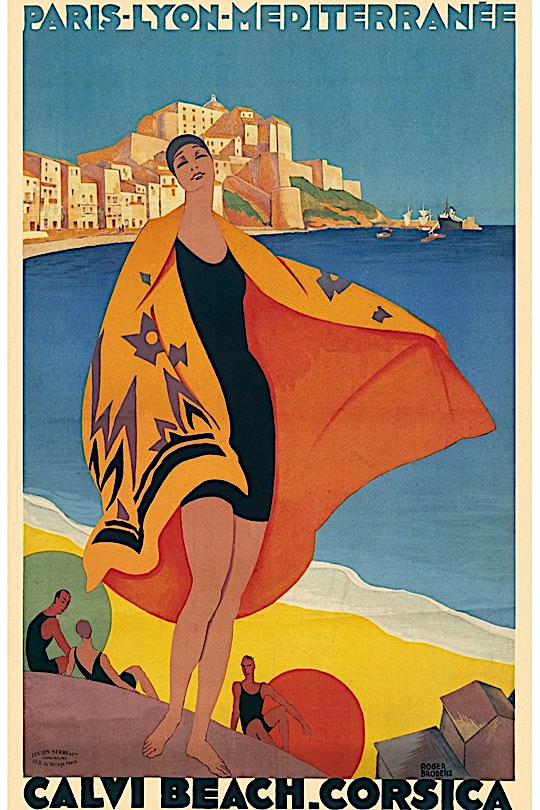
Travel Poster (1932) by Roger Broders
IN THIS ISSUE
THE FOOD AND CIDER OF ASTURIAS
By Gerry Dawes
NEW YORK CORNER
ROYAL 35
By John Mariani
CAPONE'S GOLD
CHAPTER EIGHT
By John Mariani
NOTES FROM THE WINE CELLAR
BARGAIN BURGUNDIES
By Geoff Kalish
❖❖❖


On May 24 I will be on Art Kirsch and John
Coleman’s
Celebrating Act 2 TV show to
speak about “What Makes a French Bistro So
Endearing.”
❖❖❖
Story and photos by Gerry Dawes
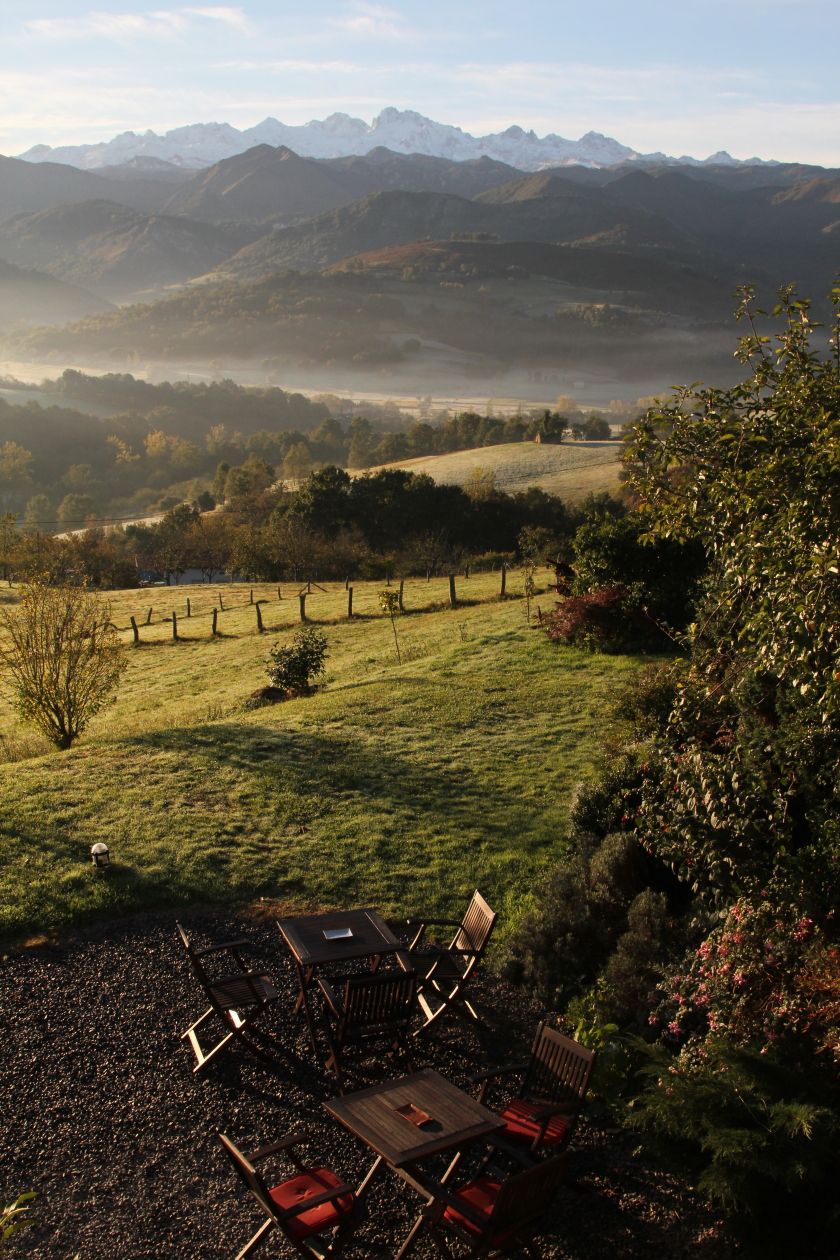 The Principado
of Asturias is
located on the mountainous Atlantic coast of
northern Spain, from which each
succeeding Spanish king-in-waiting takes the
title of Principe de Asturias. Its people
proudly call their land a Paraiso de
los Quesos (cheese paradise),
about which I will be writing soon.
The Principado
of Asturias is
located on the mountainous Atlantic coast of
northern Spain, from which each
succeeding Spanish king-in-waiting takes the
title of Principe de Asturias. Its people
proudly call their land a Paraiso de
los Quesos (cheese paradise),
about which I will be writing soon.Even if you are not a cheese aficionado, Asturias also claims to be a Paraíso Natural for scenery aficionados, hikers, rock climbers, fly-fishing enthusiasts, even cave explorers. The stunning scenery of the snow-capped Picos de Europa mountains—some of Spain’s highest—soars above a rocky landscape scored by cold rushing trout and salmon rivers that flow through bucolic rural cheese-producing villages whose surrounding pastures are often enclosed by rock walls. And on the beautiful Cantabrian Sea coast of Asturias, there are fine beaches and remarkable fishing villages with restaurants serving some of the best fish in Spain.
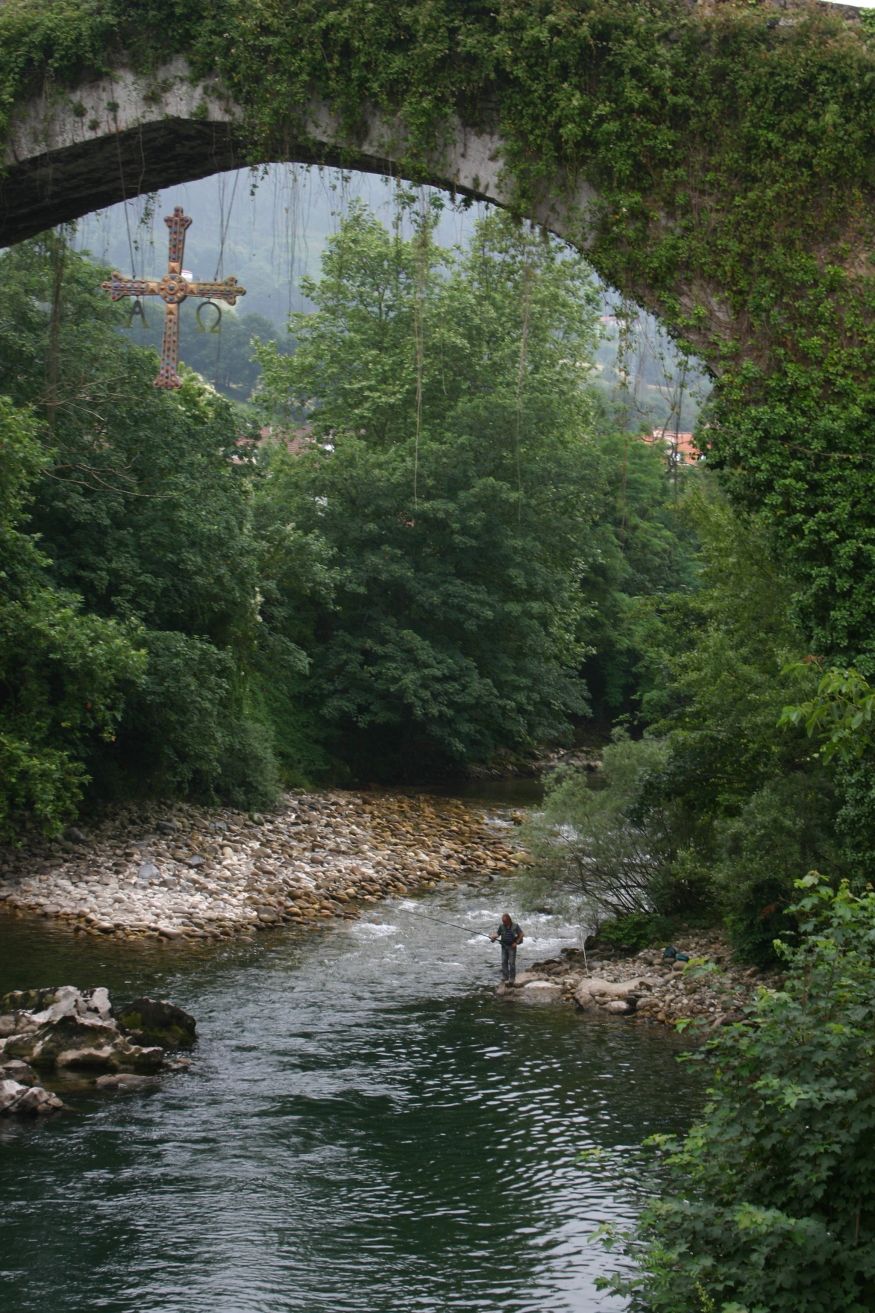
When I visited producers of the superb, unique cheeses of Asturias, I also got a fine overview of the region’s cooking in Prendes, near Gijón, at Chef Pedro Morán and his son Chef Marcos’s Casa Gerardo, a local product-driven, modern cuisine restaurant with one Michelin rosette. I also ate in rustic country restaurants serving such dishes as fabada Asturiana, the region’s “national” bean dish, venison scrapple, wild goat and corn tortos filled with chopped meat and eggs. At Tierra Astur Parilla in Oviedo, we had tortinos con revueltos de picadillo Tierra Astur, a fried corn disk something like a cross between a Mexican tortilla and Italian polenta, topped with sauteed ground wild boar meat.
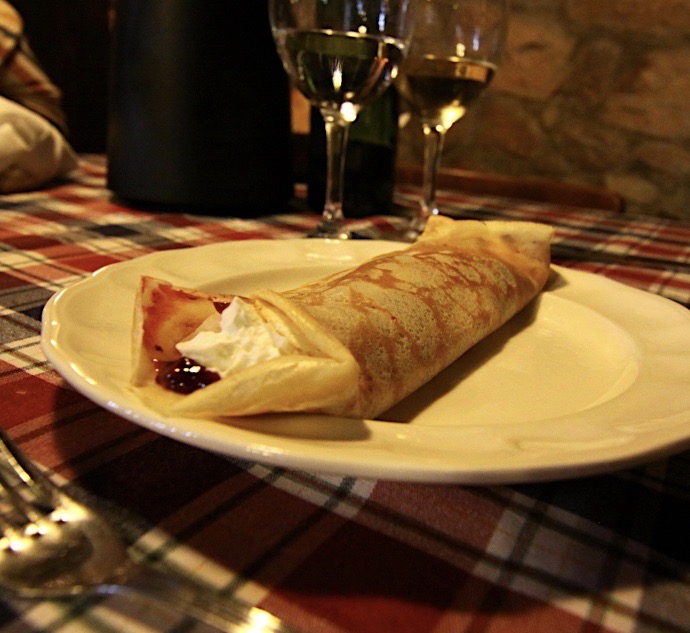 I
also had verdinas
con mariscos
(green flageolet-like beans with shellfish) and nécora crab and shrimp; an excellent
version of verdinas
con mariscos was served to my
partner Kay Balun and me for lunch at the charming
Casa Rural Heredad de la Cueste,
owned by Jaime Rodríguez Alonso
and his wife, Marichu Fernández, where we enjoyed
a snack of cider and Quesería
Priédamu Gamonéu cheese made by
Jaime’s sister in the nearby pueblo of Igena.
Marichu also served us an
excellent version of a traditional Asturian crêpes
dessert, frixuelos
(left) which are similar to French
and Galican filloa,
filled with
whipped cream and homemade mermelada de
frambuesa, raspberry jam.
I
also had verdinas
con mariscos
(green flageolet-like beans with shellfish) and nécora crab and shrimp; an excellent
version of verdinas
con mariscos was served to my
partner Kay Balun and me for lunch at the charming
Casa Rural Heredad de la Cueste,
owned by Jaime Rodríguez Alonso
and his wife, Marichu Fernández, where we enjoyed
a snack of cider and Quesería
Priédamu Gamonéu cheese made by
Jaime’s sister in the nearby pueblo of Igena.
Marichu also served us an
excellent version of a traditional Asturian crêpes
dessert, frixuelos
(left) which are similar to French
and Galican filloa,
filled with
whipped cream and homemade mermelada de
frambuesa, raspberry jam. One of the best versions of classic fabada Asturiana I have ever eaten was at La Máquina (below), a restaurant outside the town of Lugones, north of Oviedo, which has become a
 culinary pilgrimage for gourmands. The dish is
made with large
white beans, morcilla blood
sausage,
chorizo and slab bacon. The meats are separated
from the fabes and the cooking liquid and
served with the broth and el compangu,
the meat and sausages
separated from the beans. We ended our meal with a
typical Asturian dessert, arroz con
leche, rice pudding with a
caramelized sugar crust.
culinary pilgrimage for gourmands. The dish is
made with large
white beans, morcilla blood
sausage,
chorizo and slab bacon. The meats are separated
from the fabes and the cooking liquid and
served with the broth and el compangu,
the meat and sausages
separated from the beans. We ended our meal with a
typical Asturian dessert, arroz con
leche, rice pudding with a
caramelized sugar crust.Asturias is also known for a variety of fish—trout, salmon, hake, sea bream, turbot, sea bass, monkfish and red mullet—as well as shellfish, including crabs, razor clams, oysters, squid, mussels, percebes (very expensive goose barnacles), sea urchins and scallops with the coral still intact.
In 2017 my friend Marino González, who owns six sidrerías, cider houses, brought me to Tierra Astur Águila (right) in a former industrial space next to a Harley-Davidson dealership, with a cavernous 375-seat restaurant that claims to be the largest cider house in the world. Along one wall is a row of 12,000- to
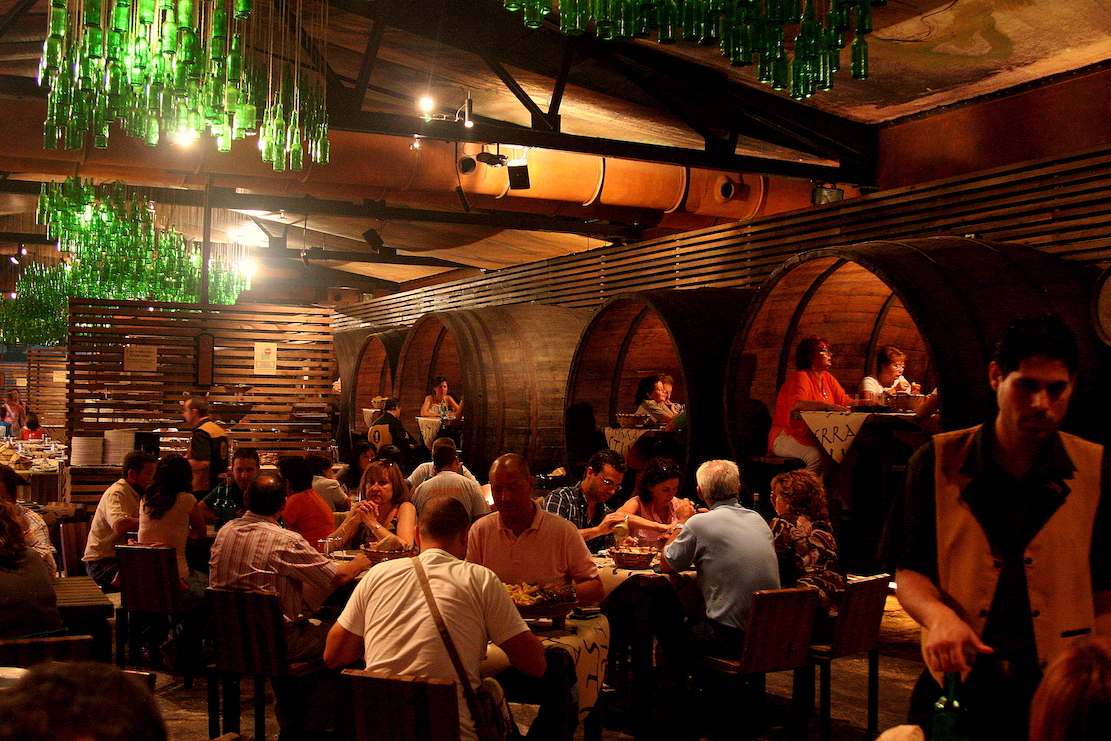 18,000-liter
toneles
(horizontal wooden vats) that have had the ends
removed and tables placed
inside with seats for eight to ten people. In this
mind-boggling space there
are 3,000 empty cider bottles hanging from the
ceiling with lights embedded
among them. In the front is a bar with a wall of
full cider bottles over which
cold water continuously flows.
18,000-liter
toneles
(horizontal wooden vats) that have had the ends
removed and tables placed
inside with seats for eight to ten people. In this
mind-boggling space there
are 3,000 empty cider bottles hanging from the
ceiling with lights embedded
among them. In the front is a bar with a wall of
full cider bottles over which
cold water continuously flows. All evening long, the bottles are pulled from the rack, their caps popped and the cider poured in a unique manner by barmen and waiters. The specially trained sidra pourers who perform this dexterous feat hold a bottle bottom in one hand and raise it above their heads to the length
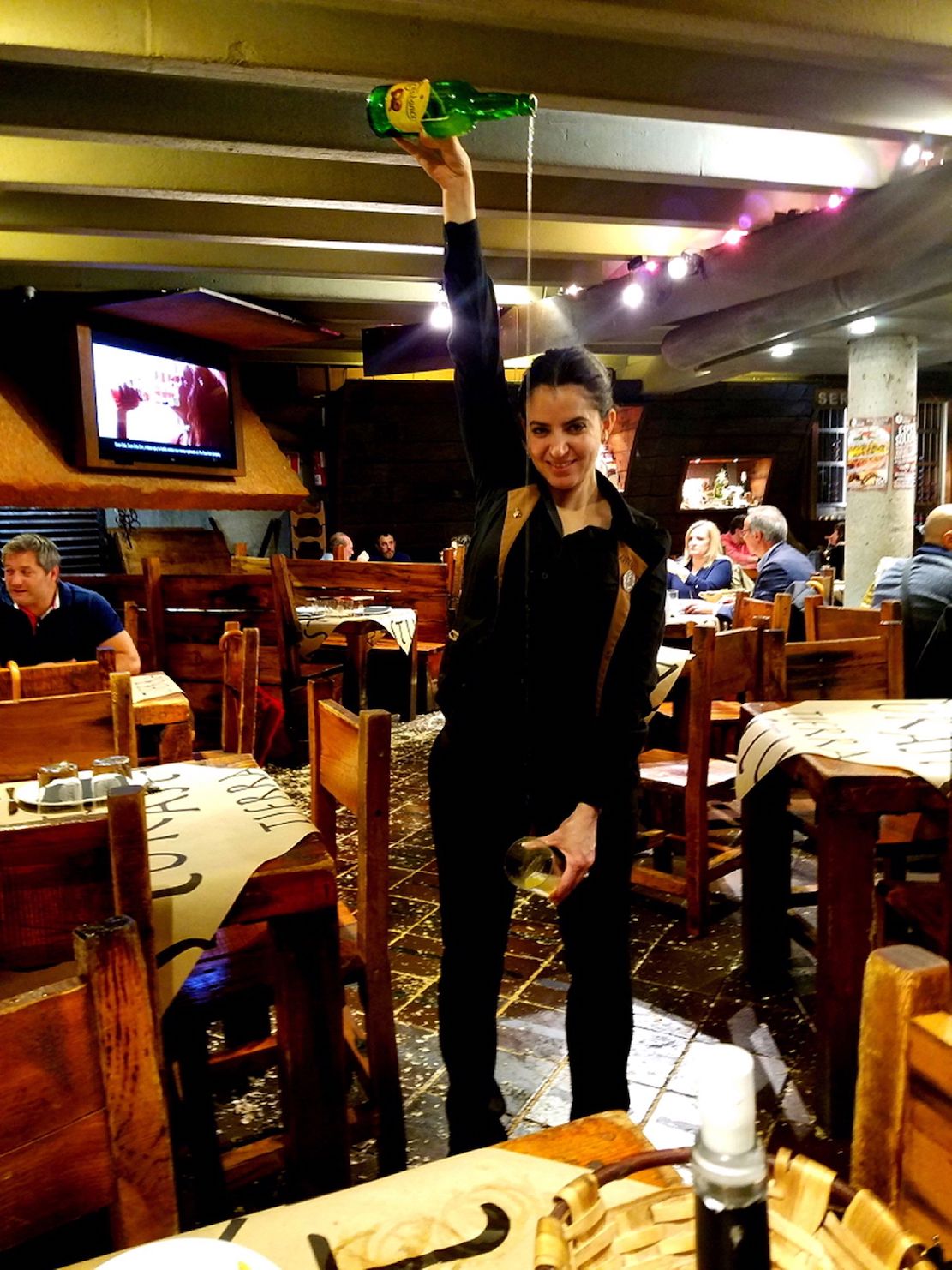 of
the pourer’s arm,
tilt the bottle and let the cider cascade some
four-to-five feet and splash
into a wide-mouthed glass held in the other hand
at the pourer’s knee level.
The result is a spectacular stream of cider, part
of which often misses the
glass and spills onto the floor, which makes
patrons grateful that cider is not
all that expensive.
of
the pourer’s arm,
tilt the bottle and let the cider cascade some
four-to-five feet and splash
into a wide-mouthed glass held in the other hand
at the pourer’s knee level.
The result is a spectacular stream of cider, part
of which often misses the
glass and spills onto the floor, which makes
patrons grateful that cider is not
all that expensive.
This escanciar technique of pouring from a height into a glass causes much of the excess CO2 in the cider to be released. The cider drinker is then expected to drink the two-fingers of cider in one gulp before all the sparkle dissipates. Though the cider is not high in alcohol, knocking back a dozen glasses of cider over the course of a meal or a bar session can take its toll.
Along the walls are food stations including a grill for meats, including Asturian beef, where diners can select some of the best steaks in Spain. Another station offers grilled vegetables and other dishes; a bread station has big wheels of crusty Asturian bread, and customers cut the amount they want for their table. And, of course, there is a large table featuring a broad selection of cheeses. There is also a desserts station, a take-out station and a store selling artisanal products.
 One
afternoon,
we traveled up to the coast to Ribadasella, where
the river empties
into the Cantabrian Sea. On the way we stopped in
for a look at Casa Julián,
a hotel-restaurant in the
hamlet of Niserias overlooking a beautiful
reservoir with a salmon ladder on
the far side. The late dictator Francisco Franco
used to stay there when he
went salmon fishing. We followed the seacoast west
to Lastres, where we found Bar El
Puerto overlooking the port and
had a simple lunch of a salad, a casserole of
steamed local clams and a plate
of grilled sardinas.
One
afternoon,
we traveled up to the coast to Ribadasella, where
the river empties
into the Cantabrian Sea. On the way we stopped in
for a look at Casa Julián,
a hotel-restaurant in the
hamlet of Niserias overlooking a beautiful
reservoir with a salmon ladder on
the far side. The late dictator Francisco Franco
used to stay there when he
went salmon fishing. We followed the seacoast west
to Lastres, where we found Bar El
Puerto overlooking the port and
had a simple lunch of a salad, a casserole of
steamed local clams and a plate
of grilled sardinas.
On a Saturday evening in Arriondas, the Mirador bar was packed with men, women and children attracted by the Asturias’ Sporting de Gijón soccer team’s match with Real Madrid on TV. Those with a bottle of cider on the table in the bar area had waiters dedicated to patrolling their areas and pouring cider as needed, which meant that the floor of the Mirador was constantly being washed down with spilled cider.
The Asturias, generally considered to be too far north and too mountainous to produce good wines, is now producing a couple of wines in the western region that now has a D.O.P. (Protected Designation of Origin), Vinos de Cangas (de Narcea) worthy of serious attention, including the mercifully light (12 percent alcohol), charming, delicious Monasterio de Corias red wine, which is reminiscent of a French Bouzy, and a white Asturian albarín-verdejo blend. Gregory Pérez from Bierzo, a wine region southwest of Asturias in the province of León, is now producing a promising Nibias Albarín Blanco, a crisp petillant white wine. The Casería de San Juan del Obispo distillery produces the very high quality Tareco cider, which
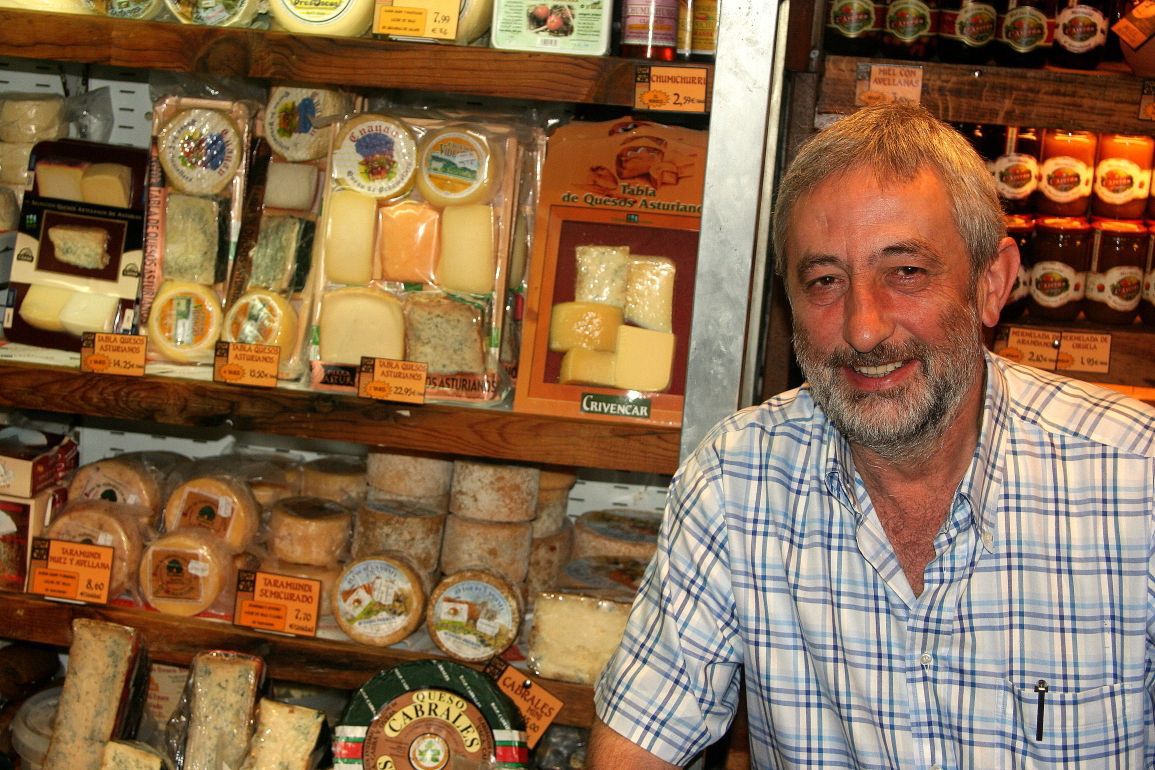 is
also the base for an excellent artisanal
eau-de-vie type aguardiente, L’Alquitara del Obispo;
the excellent barrel-aged
Salvador de Obispo, Spain’s closest equivalent to
Calvados; and the unique
L’Alquitara del Obispo Cidra de Postre, a
deliciously tart, appley dessert
cider.
is
also the base for an excellent artisanal
eau-de-vie type aguardiente, L’Alquitara del Obispo;
the excellent barrel-aged
Salvador de Obispo, Spain’s closest equivalent to
Calvados; and the unique
L’Alquitara del Obispo Cidra de Postre, a
deliciously tart, appley dessert
cider.All my experiences in Asturias were part of a large tapestry into which were woven my visits to cheese producers, a cheese museum in Foz de Morcín where Afuega’l Pitu is made, colorful cider houses, memorable Asturian cuisine restaurants and a wonderful honey producer-cum-honey education center, La Aula de la Miel. I also made excursions to the coast, to historic Covadonga and I spent wonderful days in the old quarter of Oviedo. It seemed that each place I visited to sample a cheese were also connected to yet another Asturian memory of note and most were connected to Marino González (right), my guru for all things Asturian. By the end of each of my visits to the Asturias, I vowed to return at the first opportunity to continue exploring this mountainous Paraíso de Queso, cheese paradise and veritable natural paradise.
Restaurants
Tierra
Astur, Calle Gascona, 1,
33001 Oviedo. +34 985 20 25 02
Tierra Astur
Parilla (Grill), Calle Gascona,
9, Oviedo . +34 984 84 66 24
Sidrería Tierra Astur Aguila, Colloto, suburb
of Oviedo. · +34 985 79 12 28
Restaurante
La Máquina, Av. Conde Santa
Bárbara, 59, BAJO, 33420 Lugones. +34 985 26 36
36
Casa Gerardo, Carretera AS-19, km 9,
Prendes. 33438 +34 985 88 77
97
Restaurante-Hotel
Casa Julián,
Carretera Panes-Cangas de Onis, Km 45, 33578.
+34 985 41 57
97
Sidreria Marisquería El Mirador,
Calle la Peruyal, 1,
33540 Arriondas, Asturias. +34 984 19 35 07
Recommended
Hotels and Casas Rurales
Casa
Rural Heredad de la
Cueste, C/ La Cueste, 26, Llenín, Cangas de
Onís, Asturias)
+34 686 92 73 04
Parador de Cangas de Onis, Villanueva de
Cangas, s/n, 33550, Asturias. +34 985 84 94
02
Eurostars Hotel de La Reconquista, Calle Gil de
Jaz, 16, 33004, Oviedo .+34 985 24 11 00
Gran Hotel Regente, Calle
Jovellanos, 31, 33003, Oviedo. +34 985 22 23 43
Excerpted from Sunset in a Glass: Adventures
of
a Food and Wine Road Warrior in Spain
By Gerry Dawes ©2021
❖❖❖
ROYAL 35 SURVIVES THE YEAR OF THE PLAGUE WITHOUT COMPROMISING QUALITY
1 East 35th Street
212-8084-7276
By John Mariani
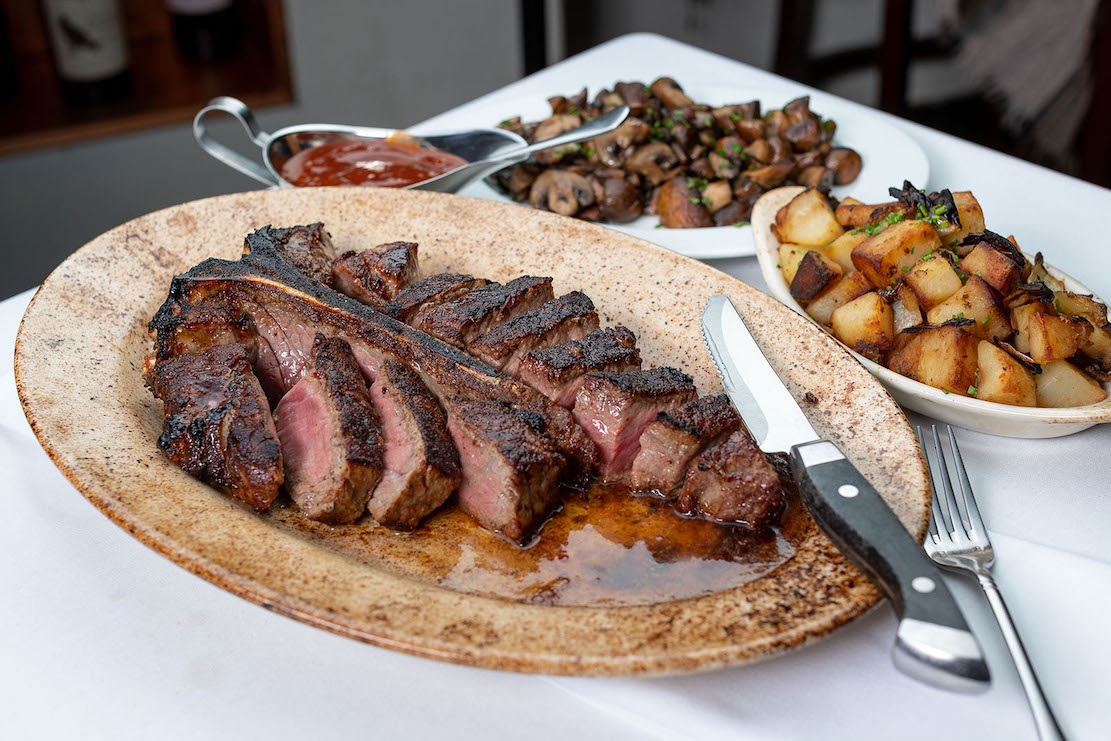
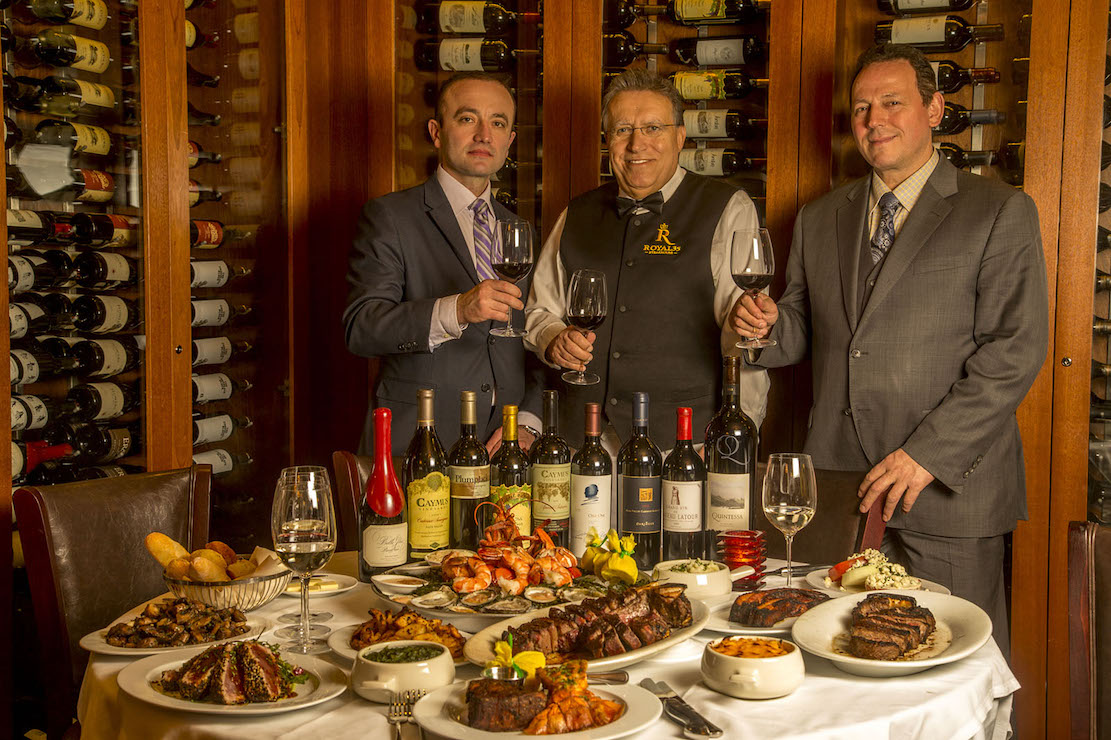 Royal
35, a New York
steakhouse that was doing everything possible
just to survive. I also wrote
that I firmly believed the American restaurant
business would indeed survive
and thrive, and that the alarmist assertions
that 70% of the nation’s
restaurants would close were preposterous, if
only because of the resolute
determination and hard work of restaurateurs
like Royal 35’s Managing partners
Alfred Cetaj
and Adam Sinanaj and partner/head bartender
Sherif Nezaj to make it work. I
thought it a good idea, then, as this week New
Royal
35, a New York
steakhouse that was doing everything possible
just to survive. I also wrote
that I firmly believed the American restaurant
business would indeed survive
and thrive, and that the alarmist assertions
that 70% of the nation’s
restaurants would close were preposterous, if
only because of the resolute
determination and hard work of restaurateurs
like Royal 35’s Managing partners
Alfred Cetaj
and Adam Sinanaj and partner/head bartender
Sherif Nezaj to make it work. I
thought it a good idea, then, as this week New 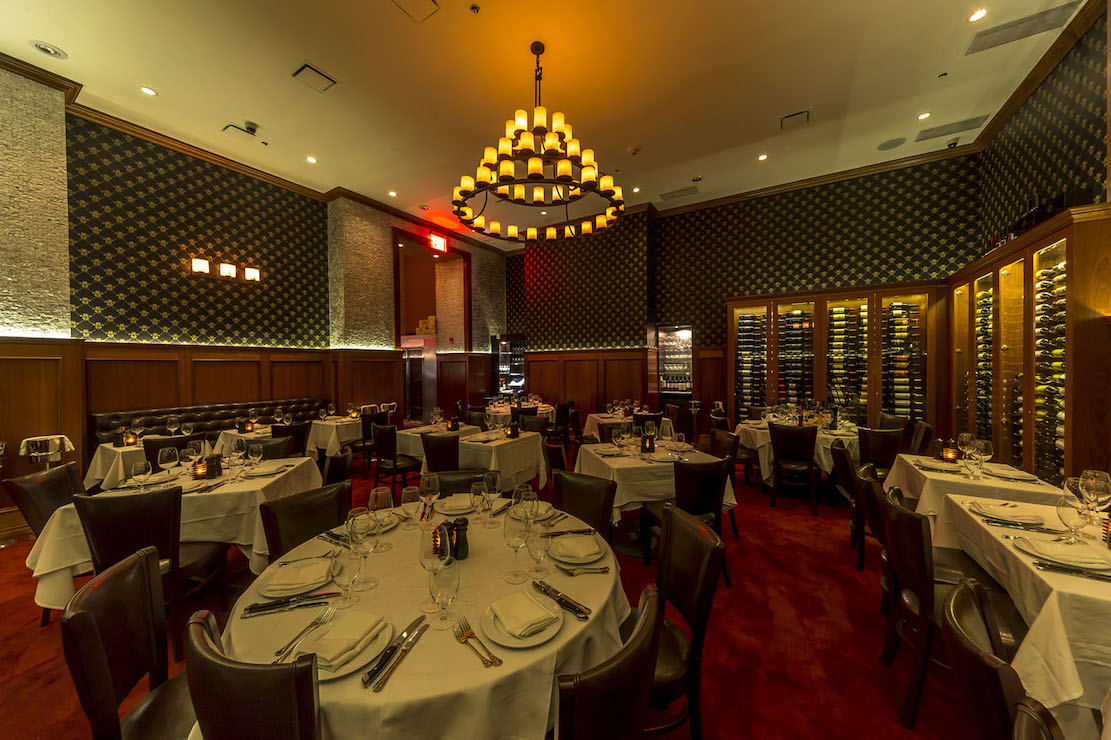 York
goes to 100% indoor and
outdoor occupancy, to see how they have managed
to survive and how they are
drawing back business. All three men
have long experience working at or running
established steakhouses like Ben & Jack’s,
Sparks, Strip House, Michael
Jordan’s and Mastro’s. Nezaj was the former owner
of Il Monello.
York
goes to 100% indoor and
outdoor occupancy, to see how they have managed
to survive and how they are
drawing back business. All three men
have long experience working at or running
established steakhouses like Ben & Jack’s,
Sparks, Strip House, Michael
Jordan’s and Mastro’s. Nezaj was the former owner
of Il Monello. Four years ago they took over the large space of what had been a series of forgettable restaurants and added a walk-in meat locker that you pass on the way to the large dining room. In that locker hang 2,500 pounds of beef, aging on Himalayan salt blocks for 35 days under ideal conditions.
There’s a very handsome, polished bar at the entrance, and the dining room is spacious, done with wainscotting and William Morris-like wallpaper, with high ceilings and walls of glassed-in wine racks. The lighting
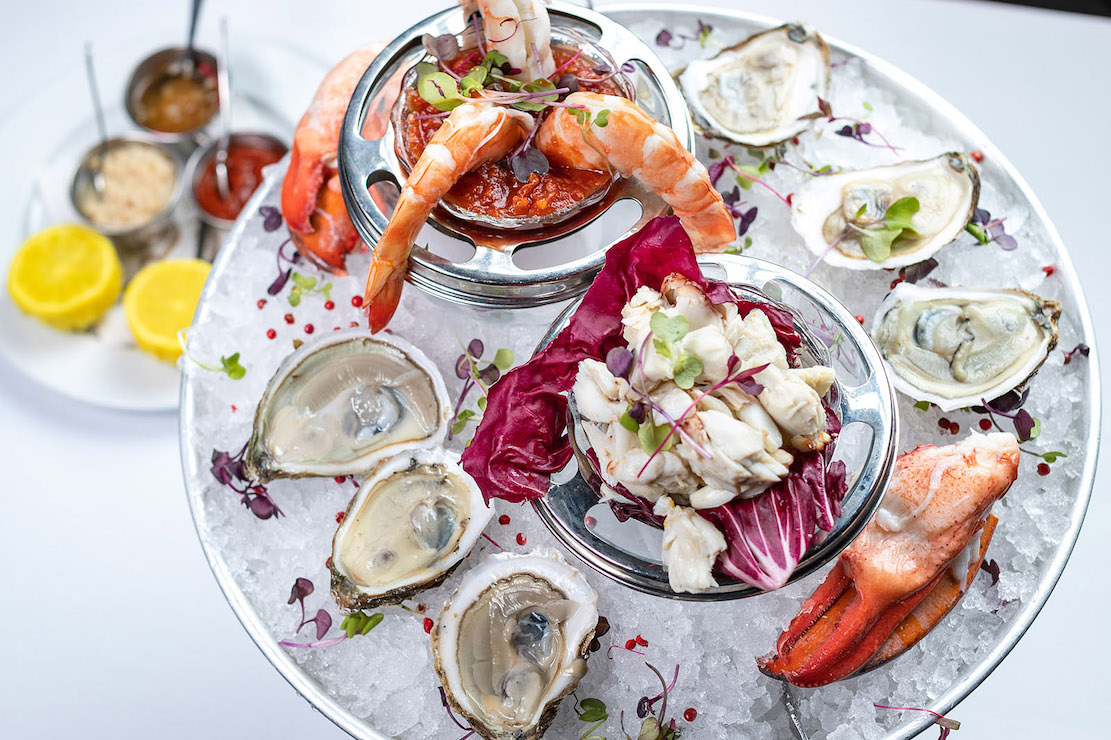 seemed lower than I recall it, for light is what
brings vitality into a room;
people don’t go to steakhouses for romantic
ambience. Tables are well separated
and capacious, with white tablecloths, fine
silverware and stemware. The owners
are always on hand to make sure your evening goes
as you wish it to, inside and
outside, where they have some very convivial
tables.
seemed lower than I recall it, for light is what
brings vitality into a room;
people don’t go to steakhouses for romantic
ambience. Tables are well separated
and capacious, with white tablecloths, fine
silverware and stemware. The owners
are always on hand to make sure your evening goes
as you wish it to, inside and
outside, where they have some very convivial
tables.Like all New York restaurants, Royal 35 depends on a hefty number of tourists, now prevented from coming to the U.S., and in this case the nearby Madison Square Garden is not yet operating at either full capacity or nightly events. (I was told that whenever Billy Joel performed, Royal 35 was packed.) Thus, the clients for the moment are regulars, neighborhood folks and some business people who know they can count on getting all the attention they crave.
The menu differs little from other steakhouse models around town, so that it is in the quality of the ingredients that one is distinguished from another. In the case of Royal 35, that dry-aged beef is the real deal, and you can see the aging and enzymes at work on the meat through that locker window. They also serve Colorado lamb chops as a sliced-up rack—in fact, the best way to go here is to share everything in the center of the table—and the veal chop ($59) is superbly flavorful.
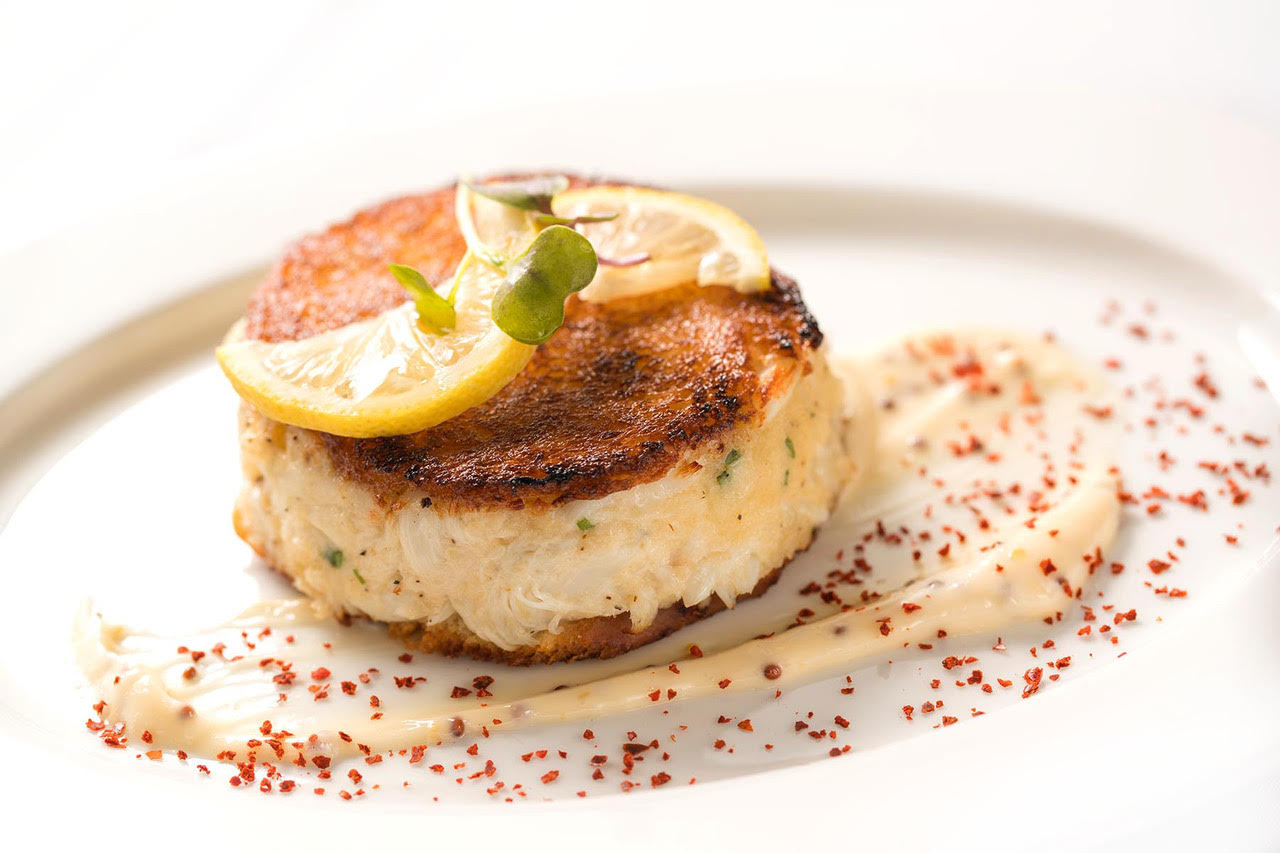
You’ll begin with a bread basket and what seems like a half-pound of butter on the table. Peruse the excellent wine list, which I must say keeps its mark-ups lower than comparable restaurants. Magnums, especially, are a true bargain. Otherwise, most mark-ups seem about 100% (most places would charge 150% to 300% above wholesale). A bottle of St. Francis Merlot runs about $35 in a wineshop, here $60. A Paul Hobbs Cabernet, $250 versus $330, and the difficult-to-find Angelo Gaja 2012 is pretty close of retail at $480. Wines by the glass range from $14 to $22.
Prices on the food items, by the way, have risen only about a dollar in the past year, at a time when what restaurants pay for food has risen about 15%. Among the appetizers, I highly recommend the crab cakes ($23); last year the crab was shredded, now it’s whole lump and meaty (right). A good
 way
for a table to enjoy shellfish is with
the
plateau (market price) of lobster, oysters,
clams, shrimp and other items
with sauces, which come dramatically billowing
dry ice “smoke.” A big, juicy
slab of bacon ($9) will easily serve four
people.
way
for a table to enjoy shellfish is with
the
plateau (market price) of lobster, oysters,
clams, shrimp and other items
with sauces, which come dramatically billowing
dry ice “smoke.” A big, juicy
slab of bacon ($9) will easily serve four
people. The specialty of the house is a tomahawk steak, whose price depends on how many order it ($118 for two), which is basically a massive ribeye with the long bone still attached. (I took that bone home and it made for a good lunch the next day.) The exterior meat was impressively charred, the inside medium-rare.
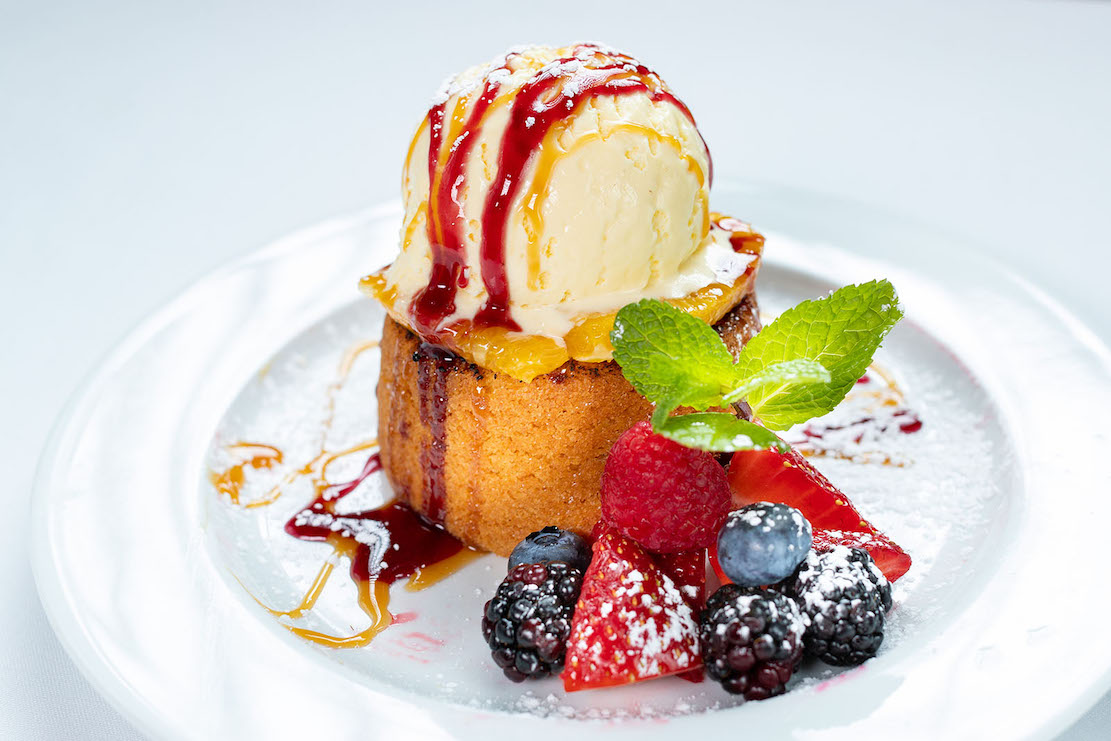
For my report I dutifully ordered a Chilean sea bass ($48) and found it one of the best things that comes out of the kitchen. Its succulence was ideal, napped with a lemon-butter-white wine sauce and a light brown seasoning seared on top.
Among the side dishes, the creamed or sauteed spinach for two ($16) is a wise choice, the German potatoes ($14) are a good platter of crisp spuds, and the onion rings ($12) are big, fat and taste of onion not batter.
If you’ve room for them, share at least two desserts, made in house, like the fudge-rich chocolate cake ($14) or the cheesecake ($14). You may take some of them home, too.
The weeknight I visited found the dining room just about 75% full, which is what was called for then. As it now goes to 100% I can imagine Royal 35 and all its competitors (the week before I visited another midtown steakhouse that was sadly cutting corners and quality) will return to their old form, so that the new normal in dining out will look, feel and taste exactly like the beloved old normal.
❖❖❖
CAPONE’S
GOLD
 David Greco
knew there’d be no listing for Larry Cuoco under
the name
“Kline” in the phone book, and the local police
were unlikely to know his
address either.
Contacting the local
F.B.I. agents would be useless and they might
trace his inquiry back to Jack
English. Instead, David went to the Buildings
Department at Tucson’s City Hall
(left) and asked to see a list of
building permits and zoning records for the
years
1985 to 1988. He had already found out from New
York Police records the date
Cuoco had testified against the Genovese
family—June 1985—and it was policy to
get such witnesses out of sight and out of town
as soon as possible.
David Greco
knew there’d be no listing for Larry Cuoco under
the name
“Kline” in the phone book, and the local police
were unlikely to know his
address either.
Contacting the local
F.B.I. agents would be useless and they might
trace his inquiry back to Jack
English. Instead, David went to the Buildings
Department at Tucson’s City Hall
(left) and asked to see a list of
building permits and zoning records for the
years
1985 to 1988. He had already found out from New
York Police records the date
Cuoco had testified against the Genovese
family—June 1985—and it was policy to
get such witnesses out of sight and out of town
as soon as possible. The Tucson records would give him the names on the sales contract (even though the feds owned and maintained the house) and the certificate of occupancy, as well as any zoning exemptions on the property, which might well have included extra security measures. Within an hour David found what he was looking for: a 1986 sale of a new house in a Tucson suburb named Oro Valley to a Mr. Abraham H. Kline. Located north of the city, it was considered a low-crime area, while south Tucson was a place where more houses were much more likely to be broken into. Checking further, he found out that Oro Valley had only about 2,000 residents and five police officers and was known as a town with a highly vigilant Neighborhood Watch.
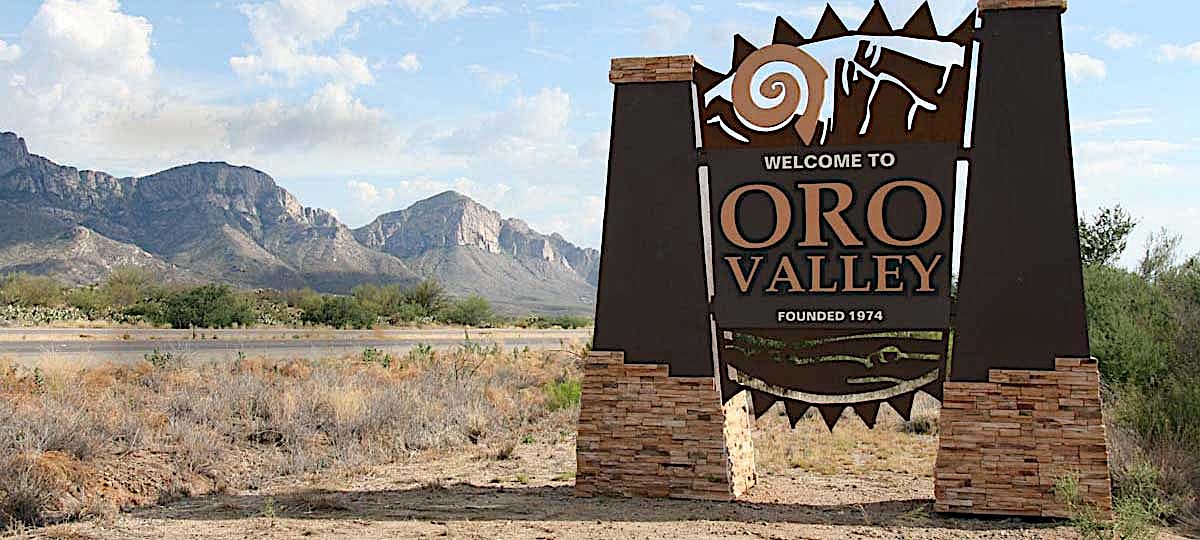
Now the trick would be to get Mr. Abraham H. Kline to talk to him at all without scaring the living daylights out of the old man.
David rented a sub-contact car—Katie asked him to try to keep the expenses down—and drove north on Route 77, passing through miles of rocky hills and dry desert scrub, a landscape about as far from the lushness of the Hudson Valley as the city of Tucson was from New York. He stopped at a gas station to get directions to Camino Verde Road, whose houses—almost all of them new—were mostly in the low-slung, one-story ranch house design, with little but desert bushes for ornament. Except one.
David saw it a block away. One of the ranch houses had a front yard of cactus and other vegetation and to the rear, a small garden shaded by tenting. Without seeing the number—2230 Camino Verde—David knew this was the place. Only an old Italian would attempt to plant so much foliage and a garden in a desert like this.
 David parked
his car, got out and walked up to
the front door.
Immediately he spotted
the security cameras and wiring someone had
installed to make this the safest
house in Oro Valley.
He rang the bell.
No answer. Again. No answer. Then a voice, “Hold
on, hold on, keep your shirt
on, I’m comin’, I’m comin’.”
David parked
his car, got out and walked up to
the front door.
Immediately he spotted
the security cameras and wiring someone had
installed to make this the safest
house in Oro Valley.
He rang the bell.
No answer. Again. No answer. Then a voice, “Hold
on, hold on, keep your shirt
on, I’m comin’, I’m comin’.”The door opened, with the chain attached, and the man said, “Who are you and whaddaya want?”
There was no mistaking this was Larry “Pants” Cuoco, older than the mug shots David had seen but looking in good health for an 86-year-old. And, yes, he was very skinny and had his trousers hiked up above his navel and tied tightly with a leather belt.
David spoke very softly. “Mr. Kline, my name is David Greco, and I used to be—and I emphasize used to be—a detective on the rackets squad in New York.”
The old man’s eyes widened and he stepped back, still keeping the door ajar. “So what the fuck’s that supposed to mean to me?”
“Well, I’m pretty sure your real name is Larry Cuoco and you used to be called ‘Pants’ in the Genovese family.”
“You don’t know what the fuck you’re talkin’ about. Get the fuck off my doorstep or I’ll call the real cops.”
It then occurred to Mr. Kline that if this guy who said he was a former cop was actually someone from the mob he would have already been dead as soon as he’d opened the door. And if he closed it, the guy would shoot him right through the door.
“Listen,” said David, “just give me one minute, here, outside the door. Look, I’m not armed.” David held up his hands and turned around twice, showing nothing underneath his clothes—a t-shirt and shorts—which he’d deliberately worn so a gun couldn’t be concealed underneath.
Mr. Kline said nothing at all, so David kept talking, telling him why he’d come, how he understood that the man now known as Mr. Kline had once been part of Capone’s gang, and that he just wanted to ask him some questions about the gold heist.
“I flew all the way out here from New York just to see you, Mr. Cuoco. Talk to me through the door, if you like. Just a couple of questions.”
“How’d you find me?”
David said, “A cop who helped you get into the Witness Protection Program back in New York.”
“That cop Cesario?”
“I can’t say.”
“Hadda be Cesario. He was okay, treated me fairly. It was the feds who turned me but Cesario got them to get me into the program rather than go to jail. Said I was too old for a federal pen.”
“So, is it okay for me to ask you some questions?”
“Ah, what the fuck,” said Pants Cuoco. “I am old—I’ll be 87 next month. What have I got to lose? I lived long enough, so if you’re gonna whack me, what the fuck.” He didn’t bother to ask for police ID from David Greco and knew the visitor didn’t need a gun to strangle him or slit his throat with one of his own kitchen knives.
Cuoco opened the door but didn’t let David inside, where the air-conditioning was going full blast, even though Cuoco was wearing an unbuttoned cardigan sweater.

David could see that the place was spotless. “I have a Mexican girl come in every week to clean and make sure everything’s in its place,” said the former gangster. “It’s the only way the agents out here can peek through the window and see nothin’s been disturbed. Let’s go into the garden out back. The whole house is bugged inside. So whaddaya wanna know?”
“Well, one basic question: do you have any information about the gold heist that has never been made public?”
“How the fuck do I know what’s been made public? I don’t read much. Hey, they still publish that Police Gazette paper? I liked reading that rag in the barbershop. Anyway, all I know about the heist was that it was one sweet operation. We pulled it off, no one got hurt, the gold was secured, and I was home for dinner in Chicago that night.”
David gulped. “Hold on, you were in on the heist?”
“Yeah. Never talked about it till now, but what the fuck. I was just a kid, maybe nineteen. I joined Capone’s outfit a year before, and he wanted fresh blood ‘cause the old guys were all dead or too fuckin’ scared. At nineteen, give a kid a gun, and he thinks he’s gonna live forever.
“We was told it should be an easy job, with no violence. As long as we were at the right place when that armored truck came through, it shoulda’ been easy. And it was. Like candy from a baby, y’know?”
Cuoco went on to describe the heist, how they blocked the truck with their cars and convinced the guards to give up and not get killed.
“We blindfolded the guards—I think there was three of them—took their guns, then marched them into the woods. They thought we was going to whack ‘em like the Saint Valentine’s set-up, but we just didn’t want ‘em to hear we had three trucks of our own comin’ and leavin’ with the gold.”
“So there were three trucks?” asked David. “And you put equal amounts of the bullion into each?”
“Pretty much so, I guess. We was workin’ fast. We’d already set up roadblocks a mile before and after where we wuz stopped, so that any drivers would think the fuckin’ road was closed for repairs or some shit. So anyways, we loaded the trucks and we took off at a nice pace and headed in three different directions. I was one of the drivers and was supposed to head west. We wasn’t told which direction the other two went, but I guess they went south or east. We left our guys behind and they brought the guards back outta the woods, locked them in their truck, ripped out some engine wires, blew a hole in the radiator, blew the tires, and left. Other guys took down those roadblocks. I tell ya, it was a sweet heist. The feds had no idea if we was in one truck or three or whatever. Maybe they did, maybe saw three sets of tire marks, I dunno.”
“So where did you drive?”
“I’m tryin’ to think,” said Pants, scratching his chin and putting his fingers through his sparse hair. “I know we wuz told we’d be back in Chicago that night, but first we had to make a stop along the way. I’m tryin’ to think. I know it was near the lake, so it coulda’ been somewhere near Gary. We got outta the truck and there was a car waitin’, and there were two guys we’d never met before who took our truck from there. They probably didn’t even know what was in the truck. I dunno where the fuck they drove it or where they hid the fuckin’ gold. I just know I was in my own bed later that night. Sweetest job I ever helped pull.”
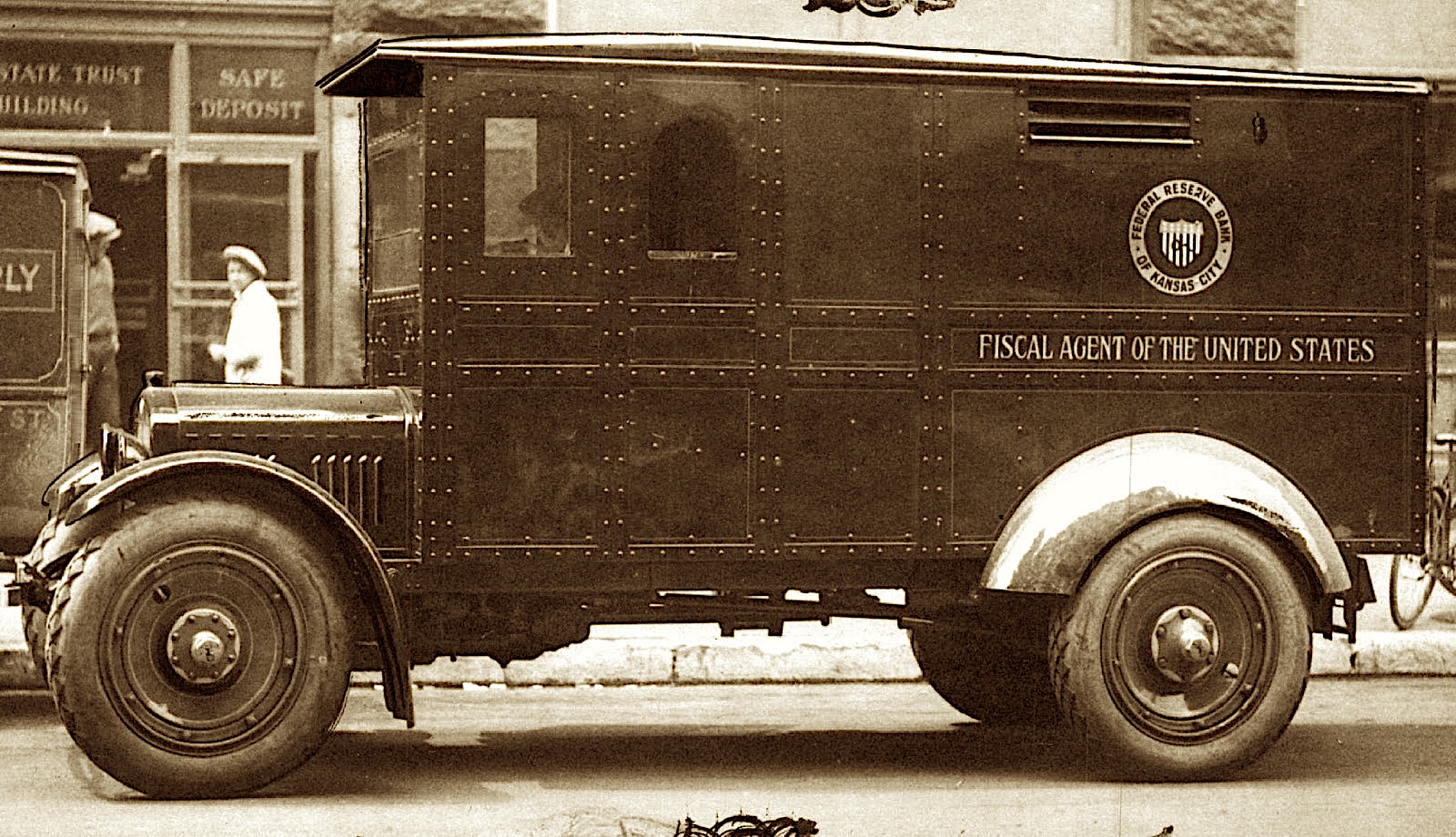 David
asked
a few more questions, pretty sure he’d gotten all
the old man could
remember, recalling what Mike Cesario said about
Cuomo’s rambling testimony
years ago.
David
asked
a few more questions, pretty sure he’d gotten all
the old man could
remember, recalling what Mike Cesario said about
Cuomo’s rambling testimony
years ago. “Do you have any idea of how many of those gold bars you unloaded from the feds’ truck?”
“Jeez, I don’t remember—hundreds,” said Cuoco. “All I remember is what a lot of fuckin’ work it was, and we had like ten guys, passing the bricks to one another along a line, and it took a long time, more than an hour, I guess. We wasn’t countin’ them, but I do remember that one of the older guys told us when to stop puttin’ them in one truck and shift to another, I guess to keep the amount pretty much even. I tell you one thing, those fuckin’ things weighed tons. The truck I was drivin’ felt heavy as hell and turning the wheel gave me sore arms by the end of the fuckin’ trip.”
David Greco had been taking this all in without taking notes, which he thought might spook Pants Cuoco.
“So you’re pretty sure those trucks didn’t all meet up again at a central location where the gold would be stored?
“Not after sendin’ them all over the fuckin’ map. Once they got to a location they wasn’t gonna take a chance gettin’ caught on the road again. By the next morning the feds’d be swarmin’ lookin’ for us, so I figure that all the trucks reached their destination within twenty-four hours.”
“Quite a plan,” said David. “And it all went down with Big Al having an airtight alibi courtesy of the feds, a nice cozy prison cell on the Rock.”
“So—what’s your name? Greco?—so you’re not gonna whack me after all?”
“Never intended to. You’re too valuable to me.”
“Yeah, well don’t tell the fuckin’ FBI agents you met me. They’re all a buncha assholes, with that fuckin’ western way they talk? I can’t understand half a’ what they say. Less they know the better. I just want to die in my own bed, which might be sooner rather than later.”
David thanked Pants Cuoco and swore he’d never use the old man’s name—real or acquired—in any account he might help Katie write.
“Send me a copy,” said Cuoco, “but I don’t expect you’ll ever find Capone’s gold. No one in the outfit when I was with ‘em ever knew what happened to it. And believe me, there were a lotta guys’d like to have collected the reward money.”
David turned his car back towards Tucson, his mind trying to connect these new dots in the story, but after spending the money on flying to Tucson, all he’d really come up with were the details about the three getaway trucks going in different directions. He thought it might be time to call Katie, if only to hear her voice.
© John Mariani, 2015
❖❖❖
By Geoff Kalish
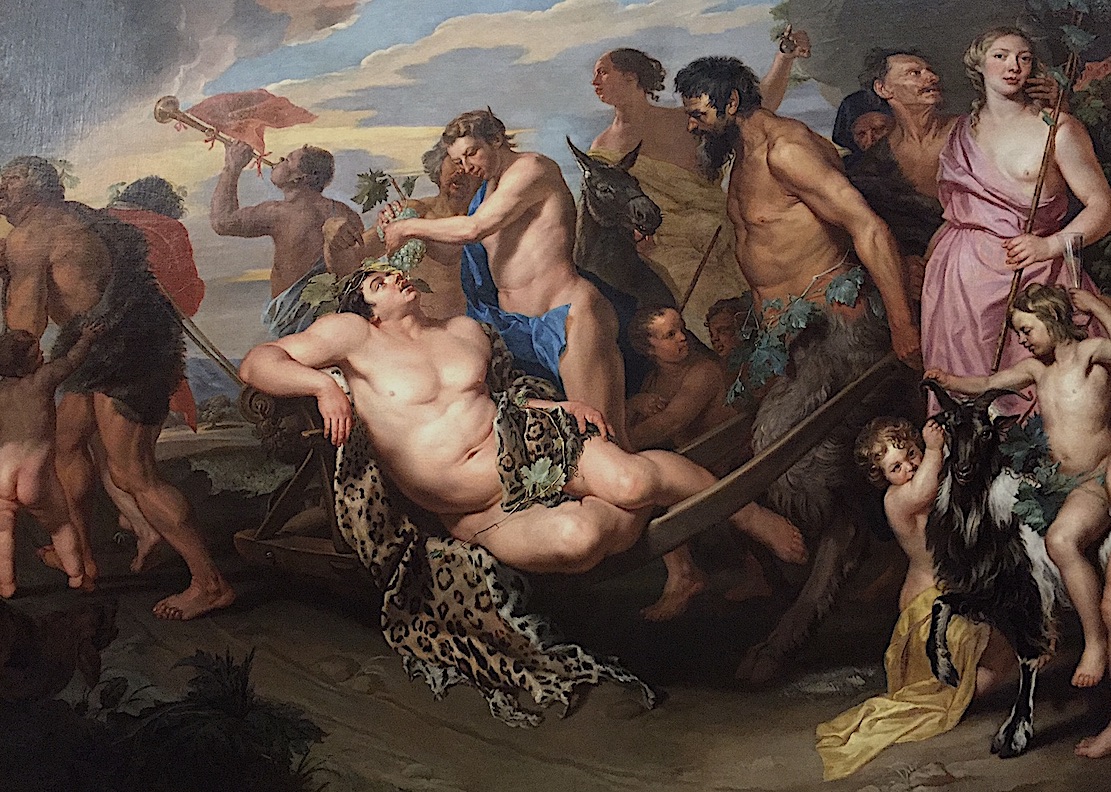
While many French Burgundies, whites as well as reds, are currently selling at retail outlets for over $200 a bottle, there are a number of excellent bottles out there available at under $50. However, there’s also more than a few mediocre bottles of Burgundy on the shelves of shops—many from so-called negoçiants, who buy bulk wine from the region’s vintners and bottle it under a variety of labels. In fact, only 25% of bottles of Burgundy (about 200 million annually) are from individual growers, most finding it too costly to bottle and sell their own product to make a reasonable profit.
On the other hand, there’s certainly profit to be made selling Burgundy, with even entry level, current vintage wines of some vintners like Domaine de la Romanée-Conti selling for upwards of $1,000 a bottle. And some negoçiants, like Louis Jadot, Joseph Drouhin, Louis Latour and Vincent Giradin, provide the market with lots of well above average bottles, all of which makes the process of finding a good bottle of sensibly priced Burgundy less than simple. So for the past year I’ve been sampling bottles sold at retail for less than $50 and the following are what I consider as some palate- and wallet-pleasing choices.
WHITES
2018 William Fevre Champs-Royaux Chablis ($27)—Made from hand-harvested Chardonnay grapes, 95% aged in stainless steel tanks and 5% aged in oak, this wine shows a bouquet and fresh taste of apples and peaches with hints of brioche in its crisp finish. It’s perfect to pair with oysters, scallops or sushi.
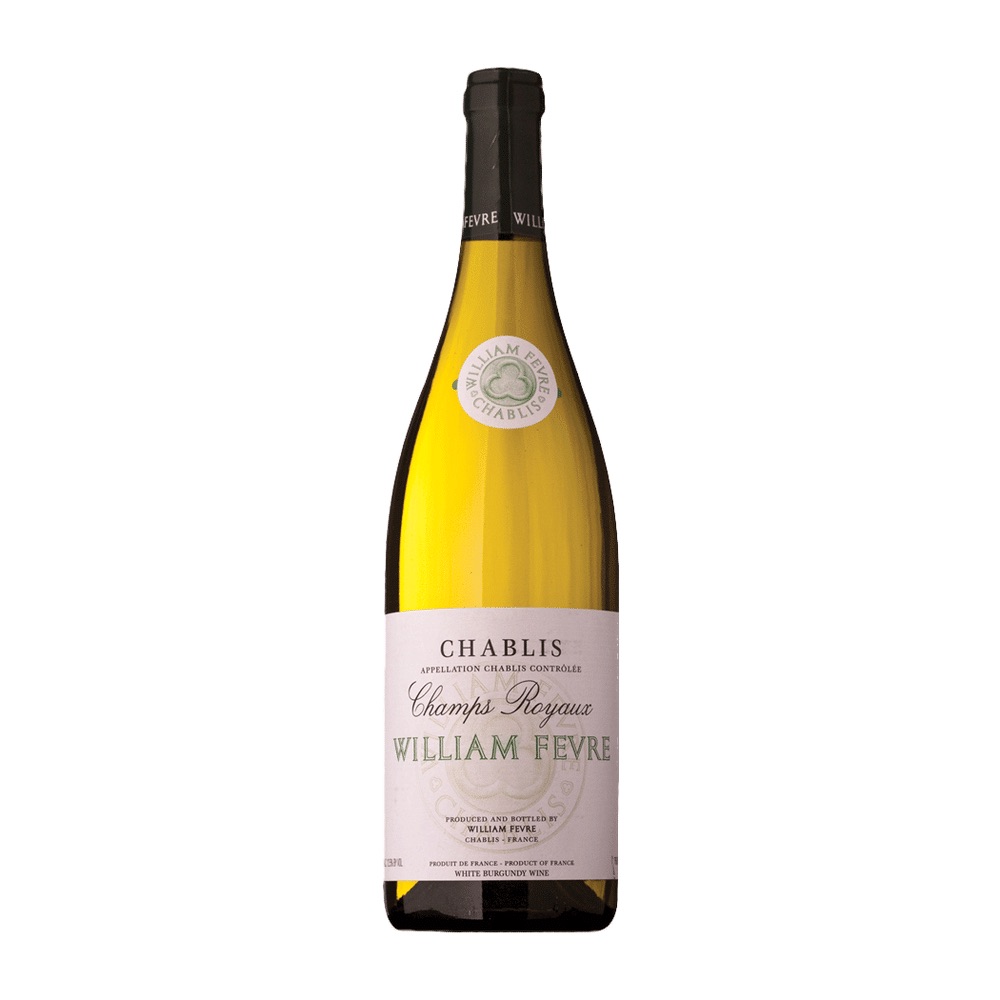
2018 Domaine Francine et Olivier Savary Chablis Fourchaume ($48)—This elegant wine is fashioned from grapes grown on a southwestern facing vineyard adjacent to the Grand Crus of the region. It has a bouquet and taste that combines the best of Prémier and Grand cru wines, with an aroma and flavor of fresh apples and lemon, with hints of pears in its long, memorable finish. Mate it with mild grilled seafare like branzino or dorade as well as shrimp or lobster.
2018 Domaine Faiveley Ladoix Blanc ($34)—A welcome exception to many mediocre whites sampled from areas in Burgundy other than Chablis, this wine was made from hand-harvested Chardonnay grapes grown in the ancient village of Ladoix-Sérrigny, about a 10-minute car ride north of Beaune. It was fermented mainly in oak and then barrel-aged in French oak for a year. It has a bouquet and taste of ripe apples and pears with notes of brioche and vanilla in its crisp finish that pairs perfectly with chilled seafood, grilled trout or mild cheeses.
REDS
2018 Domaine Faiveley Clos des Myglands ($45)—This full-bodied wine fashioned from Pinot Noir grapes grown on hillside vineyards just north of the town of Mercurey shows a bouquet and taste of plums and cranberries with hints of strawberries in its finish. It marries well with braised brisket of beef, leg of lamb or
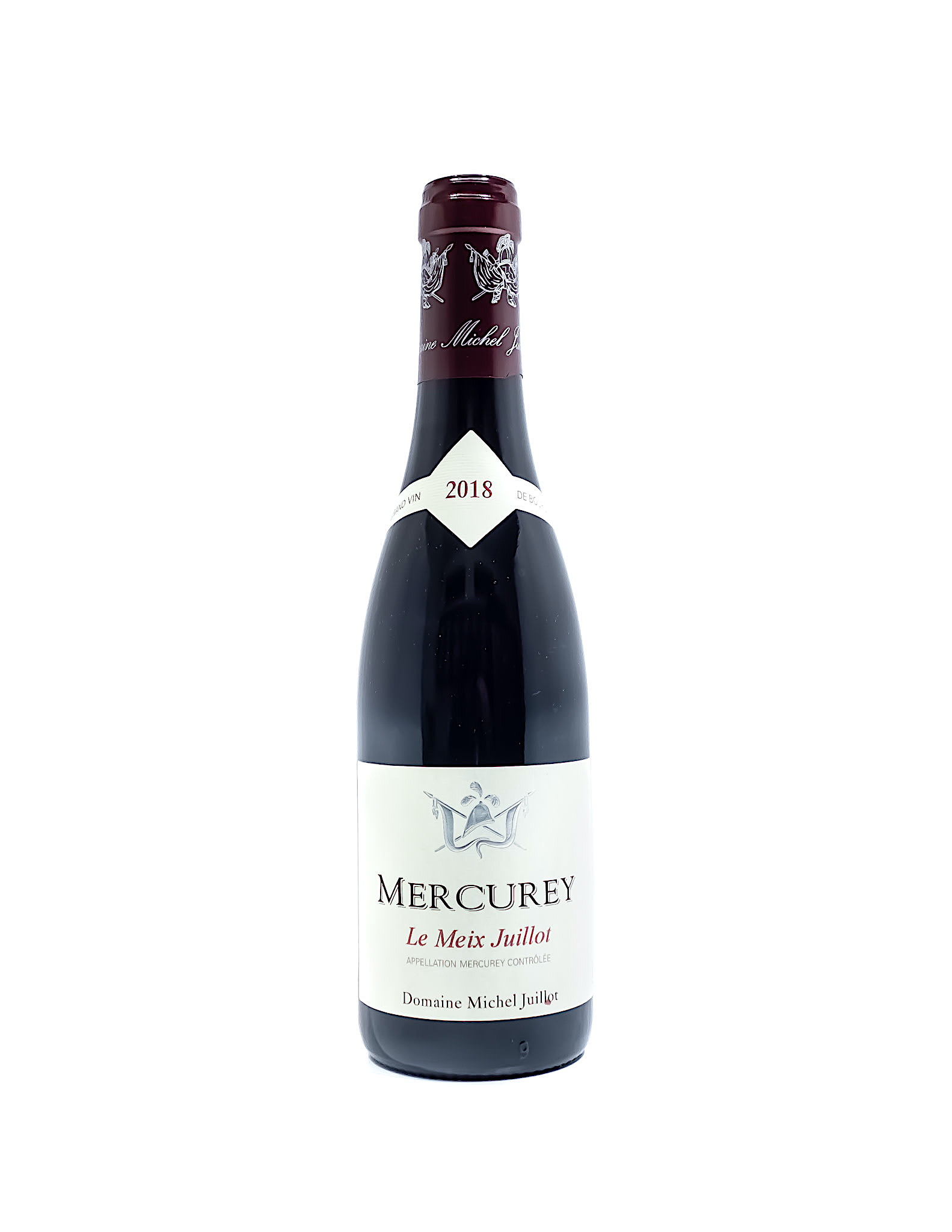 well-aged cheeses.
well-aged cheeses.
2018 Domaine Michel Juillot Mercurey Le Meix Juillot ($35)—This wine was made from hand-harvested Pinot Noir grapes using natural yeast and temperature-controlled fermentation. It’s lighter than the Faiveley product and benefits from a bit of decanting, showing a bouquet and light-bodied, elegant taste of cherries and plums that marries well with the flavors of pompano and halibut as well as chicken and duck.
2017 Bouchard Père & Fils Savigny-les-Beaune ($40)—This area just north of the town of Beaune was once noted (and criticized) for the growing of white and red varieties quite close to each other—and sometimes reds containing as much as 15% of juice from white grapes (and not just Chardonnay). In fact, on a visit to the area a number of years ago, when I mentioned to a vintner that his “red wine” vineyard contained both white and red grapes growing side-by-side, he told me that his great-grandfather, grandfather and father made excellent red wine from what was growing in the vineyard and that was good enough for him. However, this superb wine was made from only Pinot Noir grapes. And, if you like cherries and chocolate, you’ll love the bouquet and taste of this elegant, velvety smooth, yet dry wine. Mate it with just about everything, especially veal or flavorful seafare like swordfish and tuna as well as grilled lamb chops.
2017 Albert Bichot Santenay Les Charmes ($57)—Produced from Pinot Noir vines grown in a southeasterly region of Burgundy, this wine was aged in French oak for over a year. It shows a fragrant bouquet and taste of cherries and raspberries with hints of strawberry and mates well with barbecued ribs, duck or charbroiled steak.
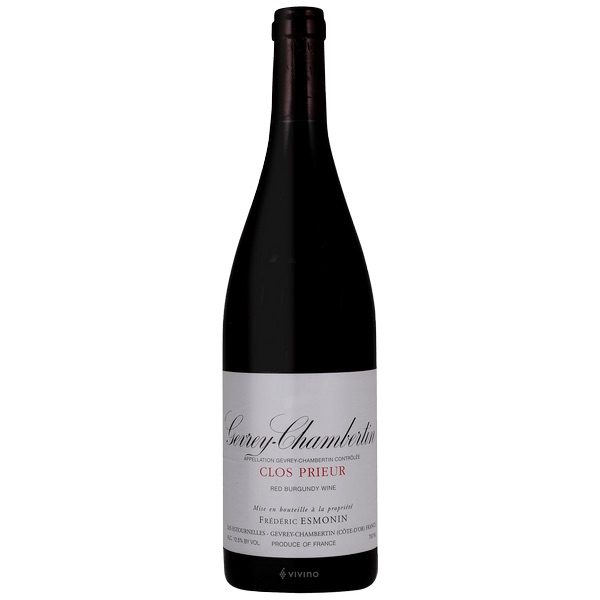 2018 Lucien
Muzard Santenay Vielles Vignes
($35)—Made by brothers Claude and Hervé,
who represent the 9th
generation of the Muzard
family producing wine from the area since the 1600s,
this 100% Pinot Noir was
fermented with native yeasts in temperature-controlled
wooden tanks and then
barrel-aged, mainly in used oak. The wine shows a
bouquet and taste of ripe
plums and raspberries with hints of vanilla and
mushrooms in its smooth finish.
It mated well with grilled duck breast, pork loin and
ribs.
2018 Lucien
Muzard Santenay Vielles Vignes
($35)—Made by brothers Claude and Hervé,
who represent the 9th
generation of the Muzard
family producing wine from the area since the 1600s,
this 100% Pinot Noir was
fermented with native yeasts in temperature-controlled
wooden tanks and then
barrel-aged, mainly in used oak. The wine shows a
bouquet and taste of ripe
plums and raspberries with hints of vanilla and
mushrooms in its smooth finish.
It mated well with grilled duck breast, pork loin and
ribs.2017 Lucien Muzard Maranges ($28)—Less well-known than many other Burgundy areas, Maranges, at the most southerly portion of the region, yields a number of bargain bottles of wine, particularly pleasant in their youth. This versatile gem, also from the brothers Claude and Hervé Muzard, hails from hand-harvested, organic grapes grown in thick clay soil. Following fermentation, 70% of the wine was aged in stainless steel tanks and the remainder in oak barrels. It shows a bouquet and ripe taste of plums and strawberries that makes good accompaniment to hamburgers as well as pizza and earthy mushroom dishes.
2017 Frédéric Esmonin “Clos Prieur” Gevry-Chambertin ($42)—Made from grapes grown in limestone-laden vineyards, featuring vines older than 50 years, just south of the village of Gevry-Chambertin—known as being Napoleon’s favorite. (In fact, legend has it that he couldn’t get any wine from this area the night before the battle of Waterloo, which resulted in his defeat.) The wine has a floral bouquet and elegant taste of ripe cherries and raspberries with notes of red currants in its finish. It married well with roasted chicken, ribs, even pasta with red sauce.
❖❖❖
 HELL, WE BEAT
THAT RECORD
MERELY
HELL, WE BEAT
THAT RECORD
MERELY BY READING HALF THIS ARTICLE.
“An Icelandic shark dish, called hákarl, was the first assault on his stomach. “Eating it was like gnawing on three-week-old cheese from the garbage that had also been pissed on by every dog in the neighborhood,” he said. Next up was durian, a spiky, custard-like fruit from Southeast Asia that “smelled like socks at the bottom of a gym locker, drizzled with paint thinner.” But worst of all was surströmming, a fermented herring that is beloved in northern Sweden. De Meyer said that eating it was like taking a bite out of a corpse. He vomited ten times, topping the [Disgusting Food Museum in Sweden’s] previous record of six. Mercifully, admission tickets are printed on airplane-style barf bags.”—Jiayang Fan, “The Gatekeepers Who Get to Decide What Food Is `Disgusting,’" The New Yorker (May 10, 2021).
Sponsored by

Any of John Mariani's books below may be ordered from amazon.com.
 The Hound in Heaven
(21st Century Lion Books) is a novella, and
for anyone who loves dogs, Christmas, romance,
inspiration, even the supernatural, I hope you'll find
this to be a treasured favorite. The story
concerns how, after a New England teacher, his wife and
their two daughters adopt a stray puppy found in their
barn in northern Maine, their lives seem full of promise.
But when tragedy strikes, their wonderful dog Lazarus and
the spirit of Christmas are the only things that may bring
his master back from the edge of despair.
The Hound in Heaven
(21st Century Lion Books) is a novella, and
for anyone who loves dogs, Christmas, romance,
inspiration, even the supernatural, I hope you'll find
this to be a treasured favorite. The story
concerns how, after a New England teacher, his wife and
their two daughters adopt a stray puppy found in their
barn in northern Maine, their lives seem full of promise.
But when tragedy strikes, their wonderful dog Lazarus and
the spirit of Christmas are the only things that may bring
his master back from the edge of despair. WATCH THE VIDEO!
“What a huge surprise turn this story took! I was completely stunned! I truly enjoyed this book and its message.” – Actress Ali MacGraw
“He had me at Page One. The amount of heart, human insight, soul searching, and deft literary strength that John Mariani pours into this airtight novella is vertigo-inducing. Perhaps ‘wow’ would be the best comment.” – James Dalessandro, author of Bohemian Heart and 1906.
“John Mariani’s Hound in Heaven starts with a well-painted portrayal of an American family, along with the requisite dog. A surprise event flips the action of the novel and captures us for a voyage leading to a hopeful and heart-warming message. A page turning, one sitting read, it’s the perfect antidote for the winter and promotion of holiday celebration.” – Ann Pearlman, author of The Christmas Cookie Club and A Gift for my Sister.
“John Mariani’s concise, achingly beautiful novella pulls a literary rabbit out of a hat – a mash-up of the cosmic and the intimate, the tragic and the heart-warming – a Christmas tale for all ages, and all faiths. Read it to your children, read it to yourself… but read it. Early and often. Highly recommended.” – Jay Bonansinga, New York Times bestselling author of Pinkerton’s War, The Sinking of The Eastland, and The Walking Dead: The Road To Woodbury.
“Amazing things happen when you open your heart to an animal. The Hound in Heaven delivers a powerful story of healing that is forged in the spiritual relationship between a man and his best friend. The book brings a message of hope that can enrich our images of family, love, and loss.” – Dr. Barbara Royal, author of The Royal Treatment.
 |
The Encyclopedia of American Food and Drink by John F. Mariani (Bloomsbury USA, $35) Modesty forbids me to praise my own new book, but let me proudly say that it is an extensive revision of the 4th edition that appeared more than a decade ago, before locavores, molecular cuisine, modernist cuisine, the Food Network and so much more, now included. Word origins have been completely updated, as have per capita consumption and production stats. Most important, for the first time since publication in the 1980s, the book includes more than 100 biographies of Americans who have changed the way we cook, eat and drink -- from Fannie Farmer and Julia Child to Robert Mondavi and Thomas Keller. "This book is amazing! It has entries for everything from `abalone' to `zwieback,' plus more than 500 recipes for classic American dishes and drinks."--Devra First, The Boston Globe. "Much needed in any kitchen library."--Bon Appetit. |
"Eating Italian will never be the same after reading John Mariani's entertaining and savory gastronomical history of the cuisine of Italy and how it won over appetites worldwide. . . . This book is such a tasteful narrative that it will literally make you hungry for Italian food and arouse your appetite for gastronomical history."--Don Oldenburg, USA Today. "Italian
restaurants--some good, some glitzy--far
outnumber their French rivals. Many of
these establishments are zestfully described
in How Italian Food Conquered the World, an
entertaining and fact-filled chronicle by
food-and-wine correspondent John F.
Mariani."--Aram Bakshian Jr., Wall Street
Journal.
"Equal parts
history, sociology, gastronomy, and just
plain fun, How Italian Food Conquered the
World tells the captivating and delicious
story of the (let's face it) everybody's
favorite cuisine with clarity, verve and
more than one surprise."--Colman Andrews,
editorial director of The Daily
Meal.com. "A fantastic and fascinating
read, covering everything from the influence
of Venice's spice trade to the impact of
Italian immigrants in America and the
evolution of alta cucina. This book will
serve as a terrific resource to anyone
interested in the real story of Italian
food."--Mary Ann Esposito, host of PBS-TV's
Ciao
Italia. "John Mariani has written the
definitive history of how Italians won their
way into our hearts, minds, and
stomachs. It's a story of pleasure over
pomp and taste over technique."--Danny Meyer,
owner of NYC restaurants Union Square
Cafe, The Modern, and Maialino.
|
 |
 |
 |
 |
 |
 |
 Everett Potter's Travel Report:
Everett Potter's Travel Report: 
 Eating Las
Vegas JOHN CURTAS has been covering
the Las Vegas food and restaurant scene
since 1995. He is the co-author of EATING LAS
VEGAS – The 50 Essential Restaurants (as
well as the author of the Eating Las
Vegas web site: www.eatinglasvegas.
He can also be seen every Friday morning as
the “resident foodie” for Wake Up With the
Wagners on KSNV TV (NBC) Channel 3 in
Las Vegas.
Eating Las
Vegas JOHN CURTAS has been covering
the Las Vegas food and restaurant scene
since 1995. He is the co-author of EATING LAS
VEGAS – The 50 Essential Restaurants (as
well as the author of the Eating Las
Vegas web site: www.eatinglasvegas.
He can also be seen every Friday morning as
the “resident foodie” for Wake Up With the
Wagners on KSNV TV (NBC) Channel 3 in
Las Vegas.
MARIANI'S VIRTUAL GOURMET
NEWSLETTER is published weekly. Publisher: John Mariani. Editor: Walter Bagley. Contributing Writers: Christopher Mariani,
Robert Mariani, Misha Mariani, John A. Curtas, Gerry Dawes, Geoff Kalish,
and Brian Freedman. Contributing
Photographer: Galina Dargery. Technical
Advisor: Gerry
McLoughlin.
If you wish to subscribe to this
newsletter, please click here: http://www.johnmariani.com/subscribe/index.html
© copyright John Mariani 2021

